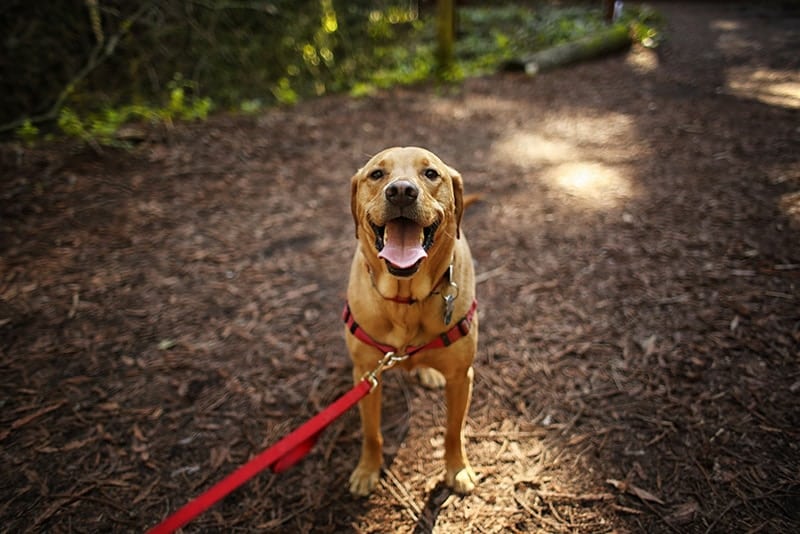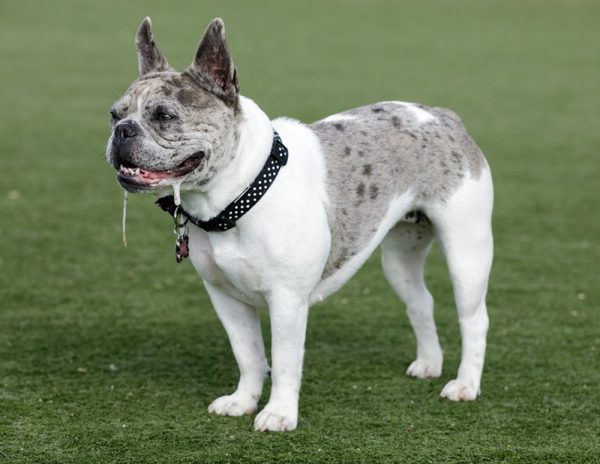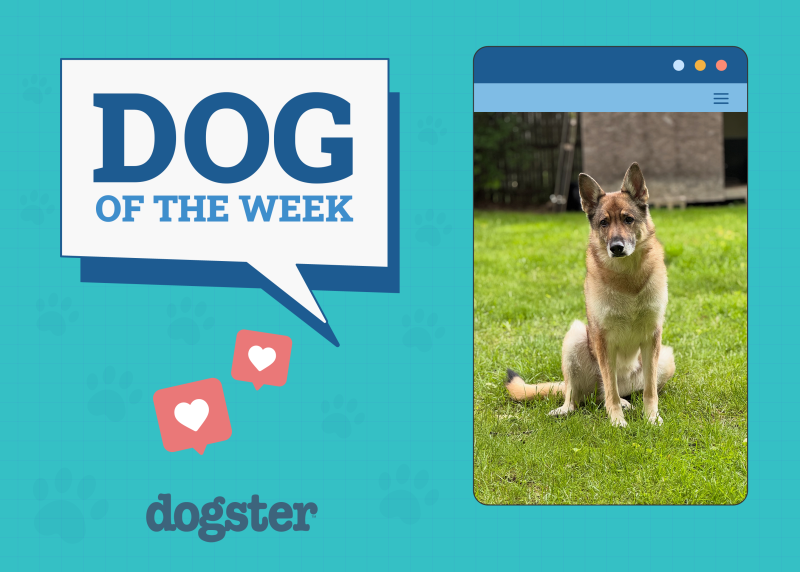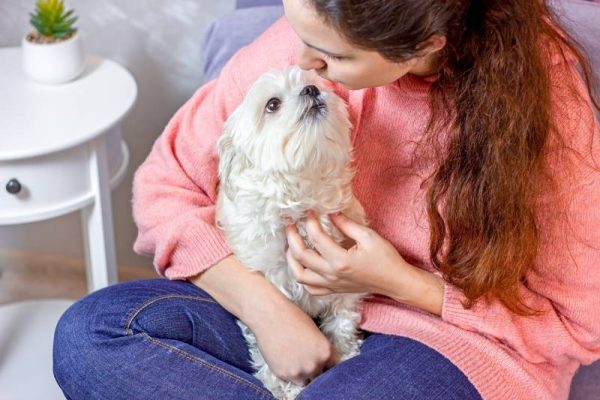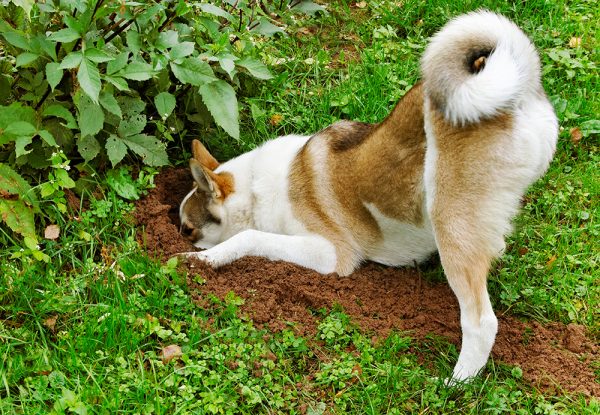When you take your dog out for a walk, are you constantly pulling them back on the leash or apologizing for their behavior? With proper training, you won’t need to. But simply saying you can train them and learning how to train them are two completely different things, which is why we came up with this guide that breaks down everything you need to know about leash training your pet. From the supplies you need to the dos and don’ts, we’ve highlighted all the basics for you below.

What You Need
The last thing you want is to try to leash train your dog with the wrong supplies and run into problem after problem. Start by getting a high-quality dog harness that properly fits your pet.
You don’t want to go for an around-the-neck dog collar, as these can be unpleasant for your dog and encourage pulling. Instead, a harness is probably your best bet. Next, get a quality 6-foot leash. Don’t get a retractable leash or one that’s longer than 6 feet, or else it can encourage your pup to wander further away from you than you’d like and make you lose control.
Finally, get some great training treats and some waste bags to clean up while on your walks. When selecting treats, find something your dog enjoys and only give it to them during these training sessions.

The 10 Tips for Leash Training a Dog
1. Start in a Quiet Space
When you’re first trying to leash train your dog, you want to keep things as simple as possible for them, and you can start by limiting the number of distractions. Don’t start leash training them outside. Instead, put them on a leash in a quiet room or space and give them time to calm down with the leash on.
This is especially true if your dog already associates the leash with walks and works themselves up when they see it. Let them calm down with the leash on before you even take a step outside.
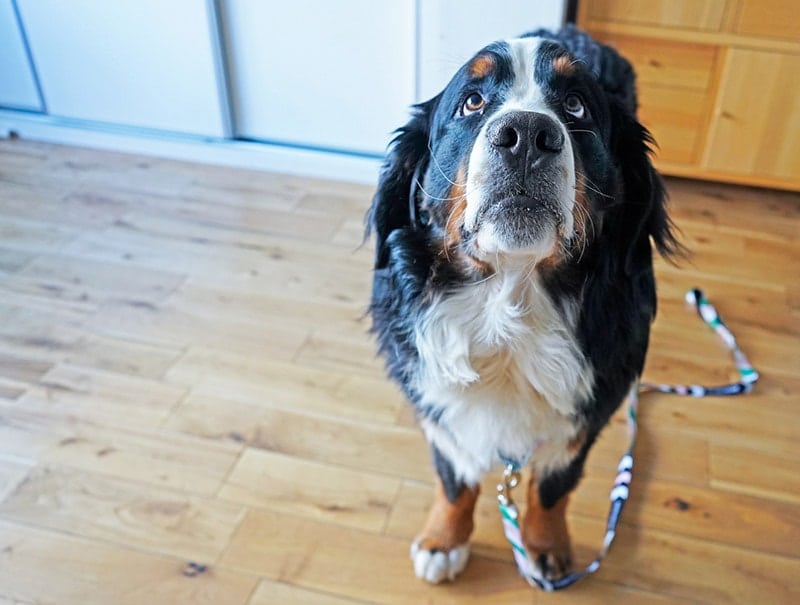
2. Use Treats
Dogs love attention, but when you’re trying to get them to listen, having a little extra motivation is always a good idea. Find some of their absolute favorite treats and then only give them these treats during leash training to help keep them motivated. Any time they do something you like, reward them to let them know that good behavior is encouraged.
3. Stay Still
When you’re trying to leash train your dog, start by putting them on a leash and staying still! You want your dog to understand that they move when you move, and that starts with teaching them that when you’re not moving, they need to stand next to you.
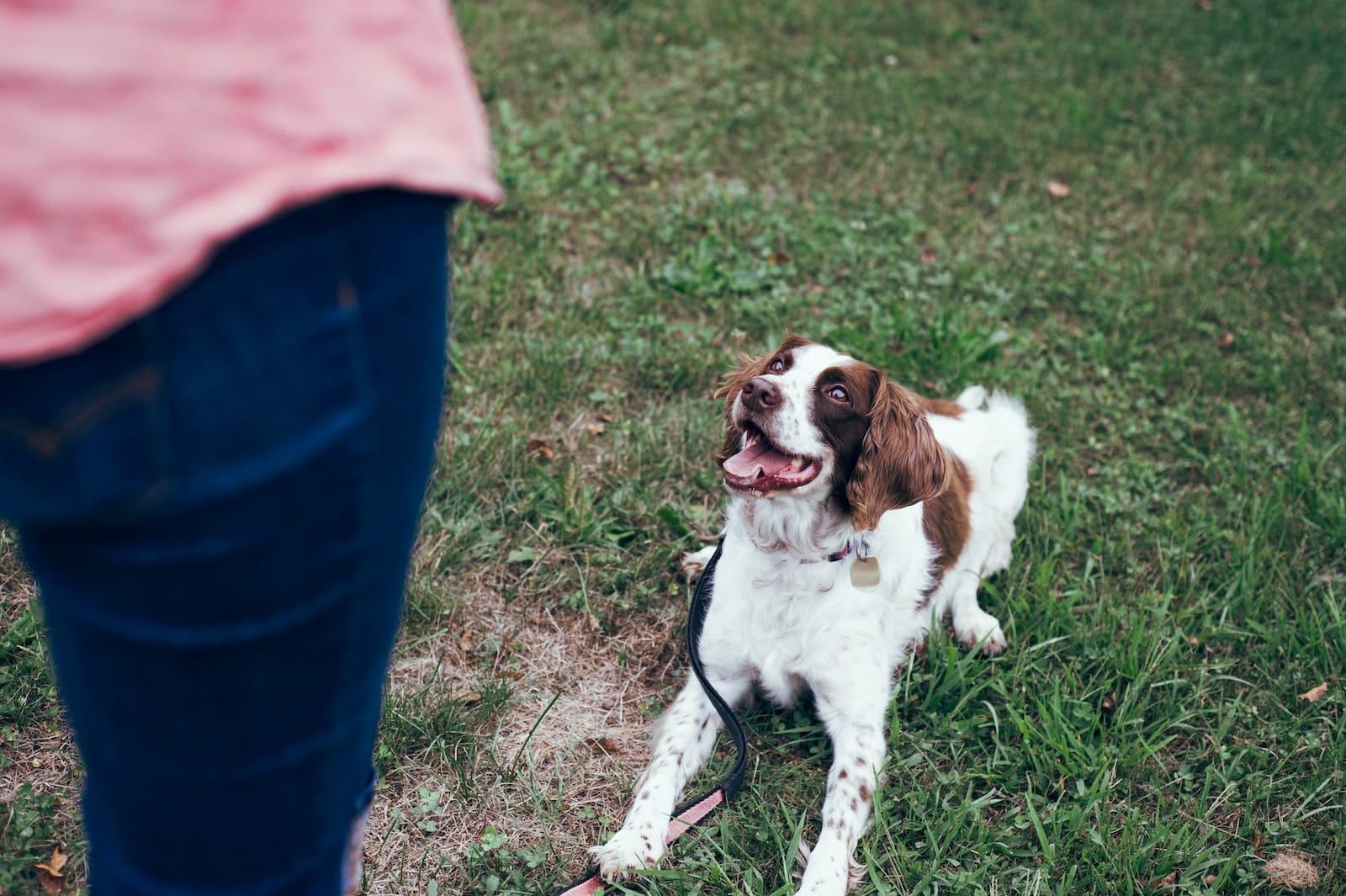
4. Slowly Extend the Time Spent Walking
You can’t go from a quiet room to a long walk overnight. Start with a short walk, perhaps to the end of the road and back, and slowly extend them if your dog is listening. If they’re not listening, turn around and take them home. You can try again tomorrow.
5. Stop Walking When They Pull
If at any point your dog starts to pull on the leash during the walk, stop moving. Don’t pull at the leash and yank them back, and don’t engage with them until they settle back down and stop pulling. It can be a bit frustrating, but it’s by far the most effective method. They need to learn what behavior is tolerated and what isn’t.
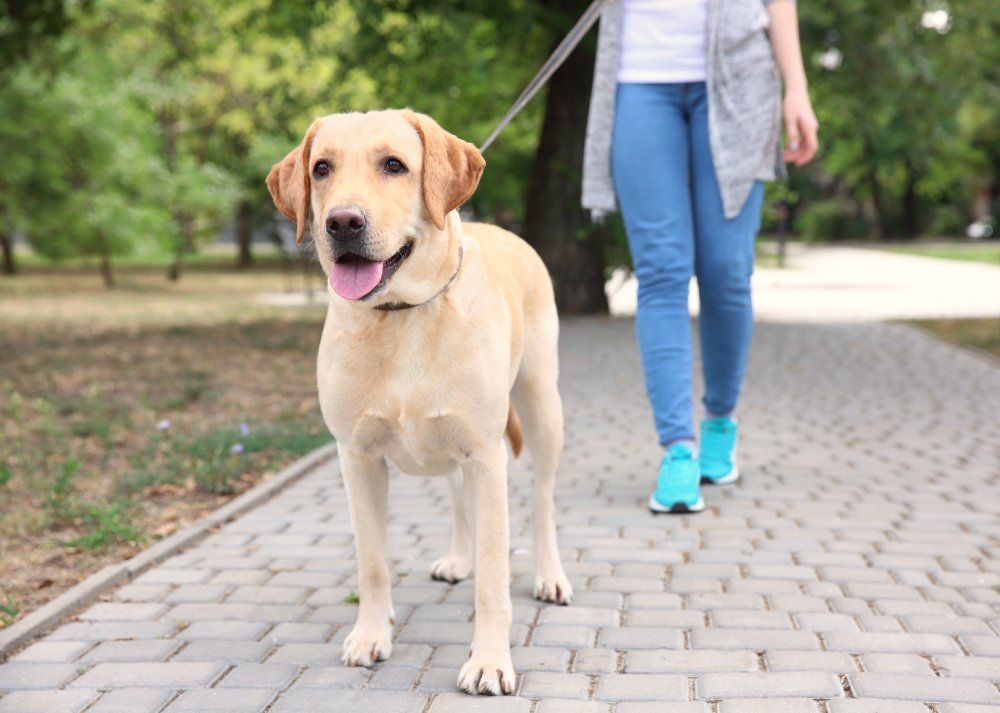
6. Don’t Be Afraid to End Walks
If your dog simply isn’t listening throughout the walk, don’t be afraid to take them back home! Your pet enjoys their walks, and if they feel like they can get what they want without listening, they’ll lose their motivation for good leash manners.
7. Mix Up When You Offer Treats
While treats are a great motivator, you want to move away from them once they start to learn what to do. Start offering treats less and less so your pup doesn’t come to expect them all the time. Before long, they’ll start to listen without any treats at all.
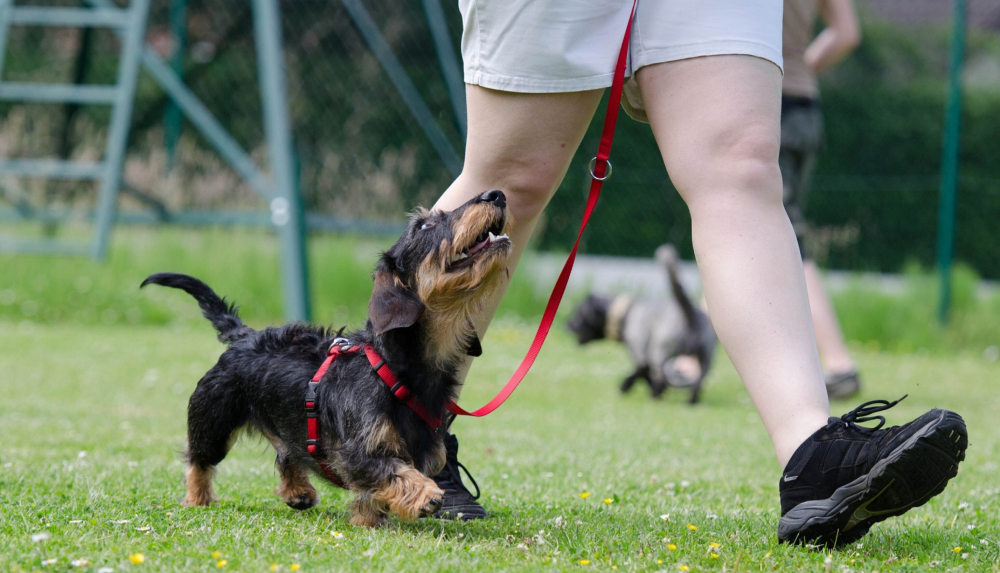
8. Don’t Use Retractable Leashes
Retractable leashes are common, but they’re absolutely detrimental to proper leash training. They can create a false sensation for your pooch that you’re pulling on the leash, making it hard for them to figure out how far away you are and where they should stand. It can also be dangerous for them because once they get to the end of the length, it can snap their neck back and cause damage to their vertebrae.
9. Find New Places to Go
Your dog gets comfortable with routine, but if you really want them to behave well in new and unique situations, you need to introduce them to unfamiliar terrain and smells. Find new places to walk to and allow them to show off their new skills.
If you keep things too simple, then they won’t know what to do when new situations arise, so introduce new places whenever you get the chance.
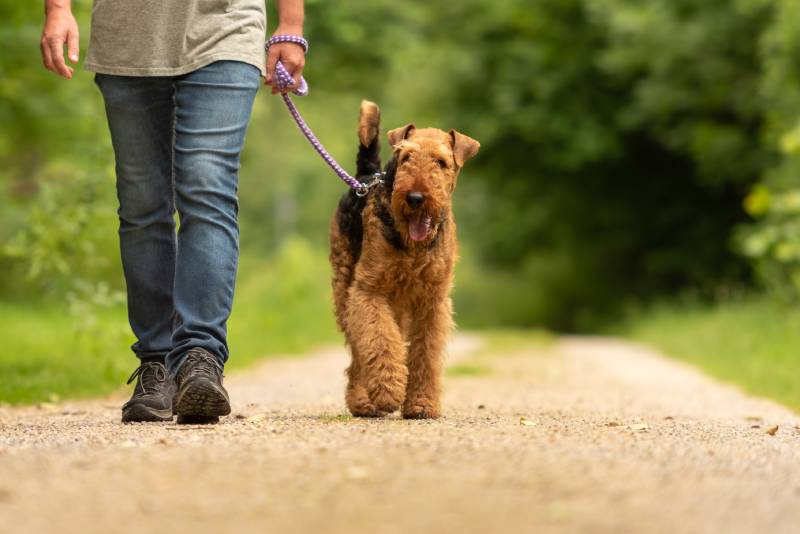
10. Avoid Routes That Could Cause Commotion
If you’re on a new route and one of the houses has a dog outside without a leash, then it could lead to a dangerous situation. If you can avoid these situations, it’s best for both you and your dog.

Final Thoughts
While your pup might embarrass you in public when they’re on a leash now, if you follow the tips we’ve highlighted, you’ll have a well-behaved pooch in no time. It’s a bit of work for sure, but when they’re finally getting the hang of things, you’ll feel a sense of pride and know that all the hard work was worth it.
Featured Image Credit: N K, Shutterstock
